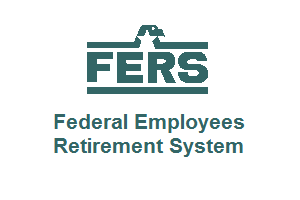 Depending on when your service as a federal employee first started, you may be part of one of two retirement systems:
Depending on when your service as a federal employee first started, you may be part of one of two retirement systems:
- the Federal Employees’ Retirement System (FERS), or
- the grandfathered Civil Service Retirement System (CSRS).
Most federal employees within the civil service are covered by FERS. Here is a quick sum-up of important FERS retirement information that is good to know as you think about the future for yourself and your family.
Federal Employees’ Retirement System (FERS)
FERS went into effect on January 1, 1987. It took the place of CSRS, in which federal employees had more of a defined-benefit pension plan structure for retirement benefits. You can think of FERS as a modern-day system. It includes a defined-contribution plan with the Thrift Savings Plan, among other benefits.
When they are covered by the FERS retirement system, federal employees have three areas of benefits:
800-972-8219
- The Thrift Savings Plan (TSP)
- A basic FERS pension annuity
- Social Security benefits
When Are You Eligible for Retirement Under FERS?
Your personal eligibility for retirement is based on a variety of factors:

- Your current age and birth year
- How many cumulative years of creditable service that you have (a minimum of 5 creditable years generally applies)
- Whether or not you have reached the minimum retirement age for your agency
- The type of retirement that you will opt for (immediate, early, deferred, or disability)
Other factors can also play into your creditable years of service. Those include:
- Used sick leave
- Unused sick leave
- Distinctions between civilian service vs. service as part of the uniformed services
Each type of retirement has its own requirements for eligibility, including years of service rules, minimum age benchmarks, and more. Your federal benefits guide can help you with understanding what might apply in your situation.
How Much Will You Get from Your FERS Retirement Benefits?
800-972-8219
Income from your FERS pension annuity and Social Security will be in fixed-dollar amounts. Your payments from those benefits sources may increase over time with cost of living adjustments (COLAs). These COLAs are intended to help you keep up with inflation.
The income that you receive from your TSP account will be based on a number of factors. That includes how much you contributed to your TSP account over time, how well those funds were managed, and how much the funds grew over the years.
The FERS Pension Annuity
In each pay period, the U.S. Government will take some money from of your base pay and put it toward your FERS pension annuity. This amount is equal to 0.8% of base pay for most FERS covered employees.
Since it has a defined-benefit structure, your pension annuity will pay you a monthly income of a certain fixed amount for the rest of your life. How much income that you will receive from your pension annuity will depend on a variety of factors. Ask your federal benefits guide if you have any questions about this.
How Do Your Other FERS Retirement Benefits Work?
 Similar to how your FERS pension annuity works, how much you will get from Social Security will be based on a few factors. Each pay period, the U.S. Government allocates 6.2% of your basic pay toward Social Security.
Similar to how your FERS pension annuity works, how much you will get from Social Security will be based on a few factors. Each pay period, the U.S. Government allocates 6.2% of your basic pay toward Social Security.
Your earnings record over time, and how long you worked in a job role that paid into Social Security, are what will determine how much you will receive from Social Security. The Social Security Administration will maintain your earnings record over time.
Your TSP account allows you to save and accumulate money for retirement on a tax-advantaged basis. You can put away pre-tax contributions as retirement savings. There are a variety of investment funds available within the TSP, which you can invest in to reach your long-term financial goals.
Many FERS employees can take advantage of a TSP match from the U.S. Government and their agency. Please note that your TSP account contributions are completely separate from your FERS pension annuity. These are individual retirement benefits, as a recap.
If they choose to retire before age 62, some FERS employees may be eligible for a special benefit called the Specialty Annuity Supplement. This is also known as the FERS Supplement, and is intended a “bridge-the-gap” retirement benefit from when you retire before 62, and when you become eligible for Social Security at 62. Your federal benefits guide can explain it in more detail.
Ready to Better Understand and Maximize Your FERS Retirement Benefits?
If you don’t understand your federal employee benefits as well as you would like, you aren’t alone. Many U.S. Government employees find their retirement benefits confusing, hard to navigate, or let alone how to coordinate them. If you are ready for guidance from a knowledgeable expert in walking through the provisions, exclusions, and other ins-and-outs of your benefits, we can help you.
Contact us today or get started with your own no-cost personal federal employee benefits analysis.
